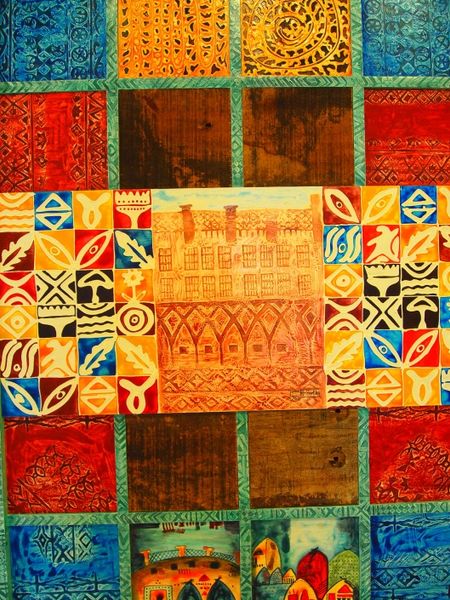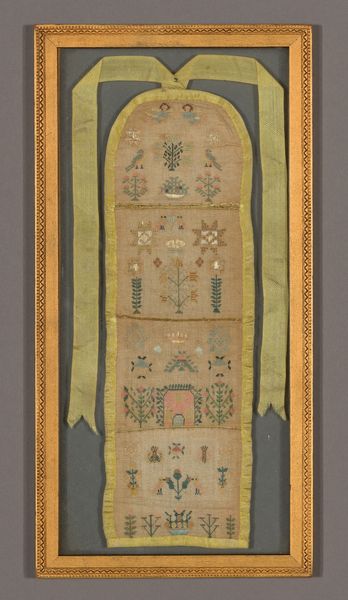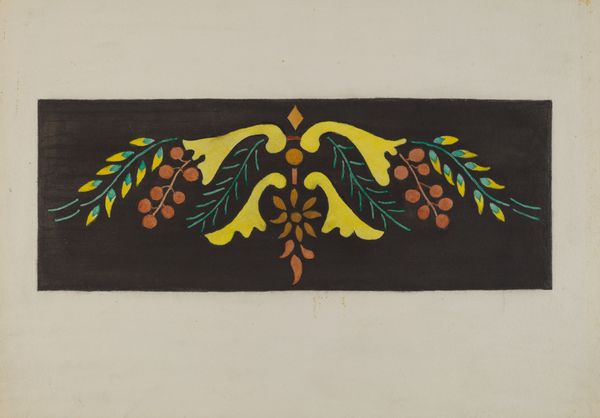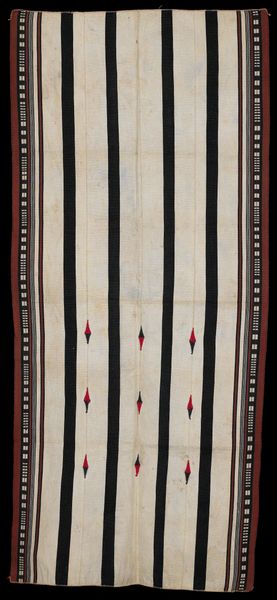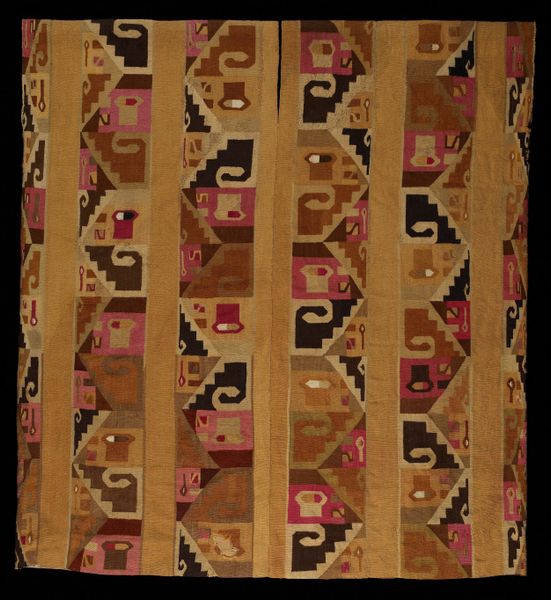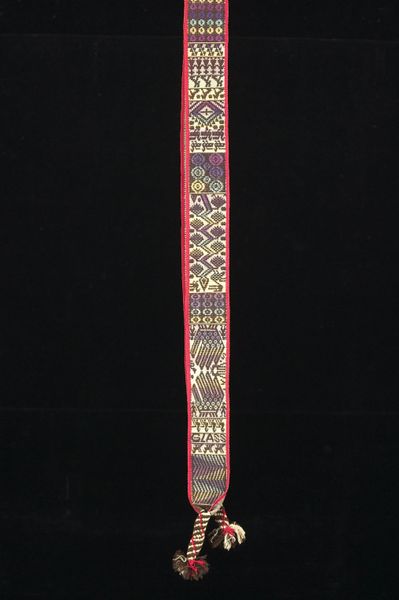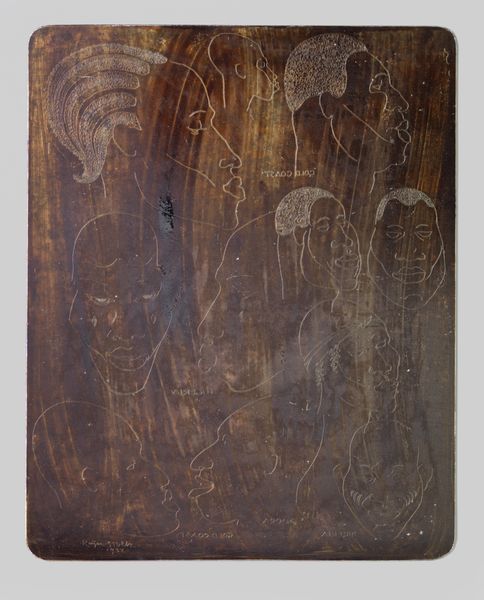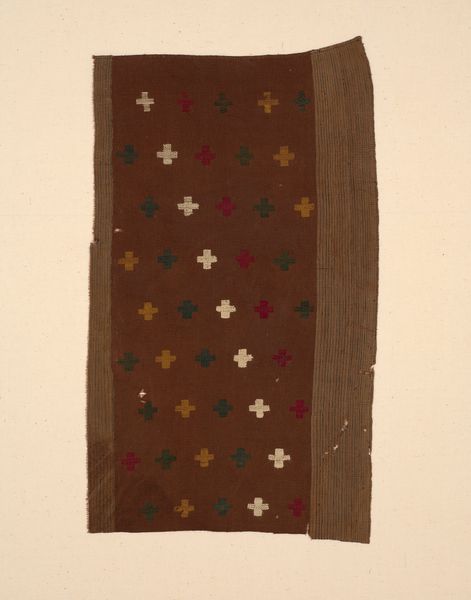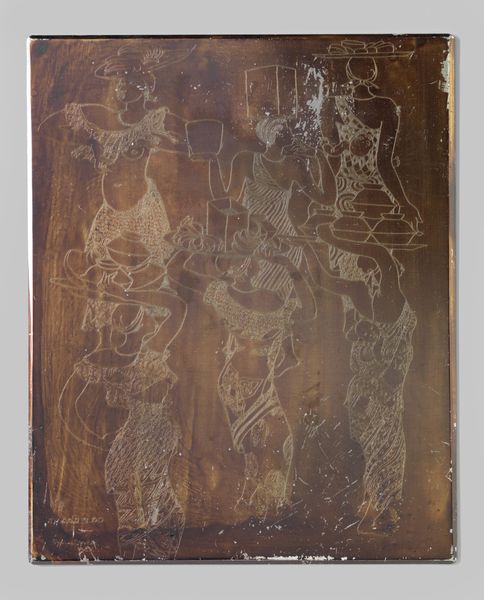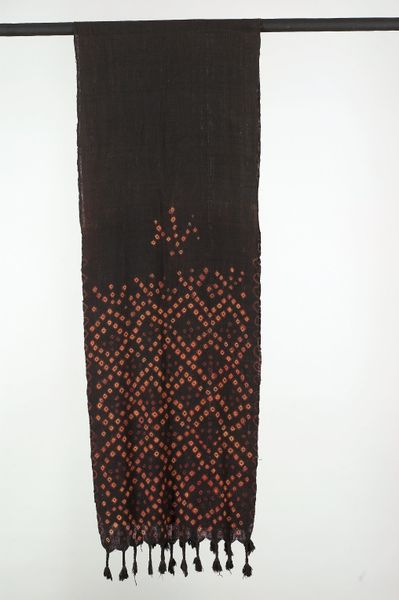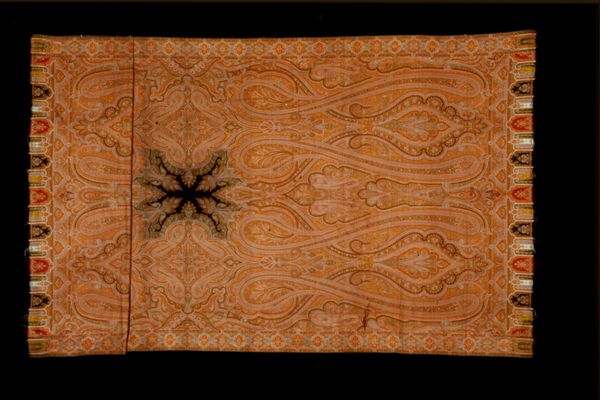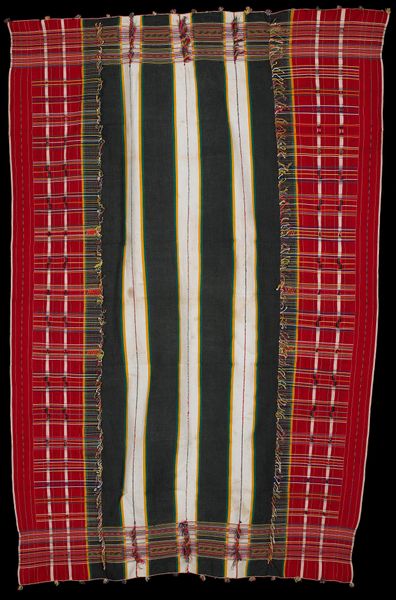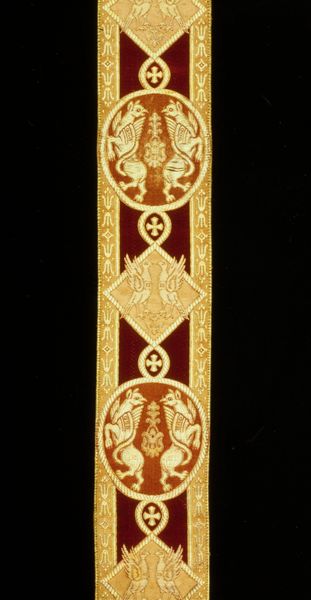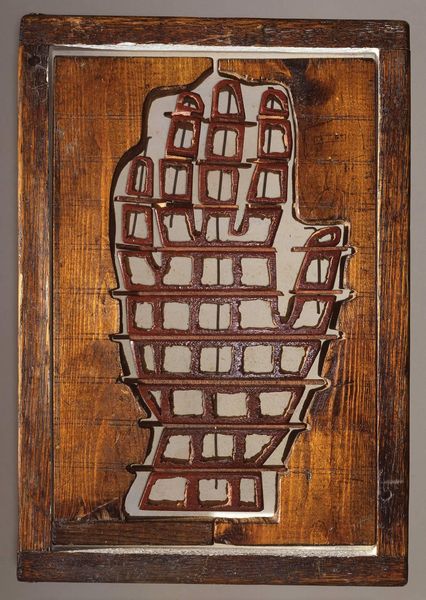
mixed-media, metal, mixed-media, wood
#
mixed-media
#
decorative element
#
metal
#
mixed-media
#
wood
#
decorative art
Dimensions: 44 3/16 × 28 × 6 5/8 in. (112.24 × 71.12 × 16.83 cm)
Copyright: Public Domain
This shield was created by a Tuareg artist in an unknown year, and is made of hide, metal and fiber. The Tuareg people, known for their nomadic lifestyle across the Sahara, have a rich cultural heritage profoundly shaped by their environment and social structures. This shield embodies the intersection of utility and identity. More than just a tool for defense, it reflects the social status and the cultural values of its owner. The geometric patterns and embellishments aren't merely decorative; they are symbolic, often conveying information about the owner's lineage and accomplishments. Consider how it feels to hold this shield, imagining the weight of both its material and symbolic significance. We might ponder the stories this object could tell about gender and power, and the roles that these shields played in shaping Tuareg society. In contemplating such objects, we gain a deeper understanding of the complex interplay between identity, history, and cultural expression.
Comments
minneapolisinstituteofart almost 2 years ago
⋮
African shields, while primarily functional objects used in warfare, also played a role as dance regalia during funerals and served as status objects and symbols of identification. Because they were often made for ostentatious display, their appearance—size, decoration, and materials—was of vital importance. As such, shields can be appreciated as sculptural expressions of creativity and craftsmanship, blurring the line between utilitarian skill and fine art. Displaying these four shields from different parts of Africa in the round allows one to see details inside. The light-colored shield, made of antelope skin in the 1800s, belonged to an aristocratic warrior of the Tuareg, a people who live throughout the Sahara region of northwestern Africa. The incised cross motif in the center may be an invocation in the Tuareg script that empowers the shield to protect its owner against the evil eye and the weapons of his enemies. The dark-colored shield is also of hide, but from the hippopotamus. Owned by a Nuer cattle herder of the Republic of South Sudan, it has an asymmetrical surface decoration of bumps that mimics the scarification pattern the Nuer used on their bodies and faces.
Join the conversation
Join millions of artists and users on Artera today and experience the ultimate creative platform.
